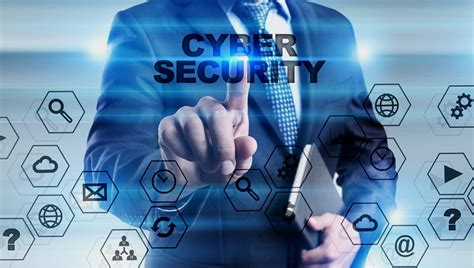In today’s digital age, the need for robust cybersecurity measures has never been more critical. With the rise of cyber threats and attacks, it’s imperative for individuals and businesses alike to understand the potential risks and how best to protect themselves. In this blog post, we’ll delve into the world of cybersecurity, covering everything from the common techniques used by cyber attackers to the importance of data encryption and the role of artificial intelligence in safeguarding against threats. We’ll also explore the realm of malware, viruses, and the significance of securing networks and firewalls. Additionally, we’ll discuss the implementation of multi-factor authentication and the importance of educating employees on cybersecurity awareness. As the digital landscape continues to evolve, it’s essential to be prepared for future cybersecurity challenges. Join us as we take a closer look at how to crack the digital case and build a strong cyber defense strategy.
Table of Contents
Understanding Cybersecurity Threats
In today’s digital age, cybersecurity threats are a major concern for individuals, businesses, and governments alike. With the increasing reliance on technology, the risk of cyber attacks has also grown. It is crucial to have a comprehensive understanding of the various cybersecurity threats in order to protect sensitive data and prevent potential breaches.
One of the most common cybersecurity threats is phishing, where attackers use deceptive emails or websites to trick individuals into providing sensitive information such as passwords or credit card details. Another prevalent threat is ransomware, which involves encrypting files and demanding payment in exchange for the decryption key.
Denial of Service (DoS) attacks pose another significant cybersecurity threat, as they aim to overwhelm a system or network, rendering it inaccessible to legitimate users. Additionally, malware and viruses continue to be persistent cybersecurity threats, infecting systems and causing damage to data and software.
Understanding these cybersecurity threats is essential for implementing effective security measures and staying ahead of potential attacks. By staying informed about the latest trends in cyber threats, individuals and organizations can mitigate their risk and protect their digital assets.
Identifying Common Cyber Attack Techniques
Identifying Common Cyber Attack Techniques
Cyber attack techniques are constantly evolving as technology advances, and it is crucial for individuals and organizations to stay informed about the common methods used by cybercriminals. One common cyber attack technique is phishing, where attackers create fake emails or websites to trick users into providing sensitive information such as usernames, passwords, and credit card details. Another prevalent technique is ransomware, which involves encrypting a victim’s files and demanding payment in exchange for the decryption key. Additionally, social engineering is a tactic that exploits human psychology to manipulate individuals into divulging confidential information or performing certain actions.
Cyber attack techniques also include malware, which encompasses a variety of malicious software designed to infiltrate and damage computer systems. This can take the form of viruses, worms, trojans, and spyware, each with their own methods of exploitation and harm. Furthermore, Distributed Denial of Service (DDoS) attacks overwhelm a target system with a flood of internet traffic, rendering it inaccessible to legitimate users. Lastly, insider threats involve malicious actions or negligence from individuals within an organization, posing a significant risk to data security.
By identifying common cyber attack techniques, individuals and organizations can take proactive measures to defend against these threats. This includes implementing strong security measures such as firewalls, antivirus software, and regular software updates to mitigate the risk of cyber attacks. Moreover, educating users about the signs of phishing attempts and the importance of exercising caution when sharing personal information online can help prevent falling victim to these tactics.
Understanding these threats is essential in constructing a robust cybersecurity defense strategy that safeguards sensitive data and mitigates the potential impact of cyber attacks. When individuals are equipped with the knowledge and tools to recognize and respond to common cyber attack techniques, they can contribute to creating a more secure digital environment for themselves and others.
Building a Strong Cyber Defense Strategy
When it comes to safeguarding sensitive information and preventing cyber attacks, it is crucial for organizations to build a strong cyber defense strategy. This involves implementing a multi-layered approach to security, utilizing the latest technologies, and staying abreast of emerging threats and vulnerabilities.
One of the key components of building a strong cyber defense strategy is to conduct regular security assessments and penetration testing. This helps identify potential weaknesses and vulnerabilities in the network and systems, allowing for proactive remediation before attackers can exploit them.
Additionally, organizations need to invest in robust endpoint protection solutions, such as next-generation antivirus and endpoint detection and response (EDR) tools. These technologies can help detect and thwart advanced threats, including ransomware and Trojans, before they can cause damage.
Furthermore, building a strong cyber defense strategy involves implementing a comprehensive incident response plan. This ensures that in the event of a security breach, the organization can quickly and effectively contain the incident, minimize damage, and return to normal operations as soon as possible.
Importance of Data Encryption in Cybersecurity
Data encryption is a crucial component of cybersecurity, as it plays a vital role in securing sensitive information and preventing unauthorized access. When data is encrypted, it is converted into a code that can only be accessed with the right decryption key, ensuring that even if a cybercriminal gains access to the data, they won’t be able to make sense of it. This not only protects the data from theft and unauthorized use but also builds trust with customers and clients who rely on businesses to keep their information secure.
Implementing data encryption also helps businesses comply with data protection regulations and standards, such as the General Data Protection Regulation (GDPR) and the Health Insurance Portability and Accountability Act (HIPAA). These regulations require organizations to protect sensitive data through encryption to safeguard the privacy and security of individuals’ personal information. Failure to comply with these regulations can result in severe penalties and damage to the organization’s reputation.
Another important aspect of data encryption in cybersecurity is the protection of intellectual property and trade secrets. Many businesses rely on proprietary information and valuable data that, if exposed, could have significant financial and competitive repercussions. Data encryption provides a layer of defense against espionage, industrial sabotage, and other malicious activities aimed at stealing sensitive business information.
Furthermore, in today’s interconnected digital world, data is constantly being transmitted over networks, making it vulnerable to interception by cybercriminals. Encrypting data before transmission ensures that even if intercepted, the information remains unreadable and unintelligible, maintaining its confidentiality and integrity. This is particularly important for businesses that rely on online transactions and electronic communication to conduct their operations.
Exploring the World of Malware and Viruses
Malware and viruses are a significant threat to individuals and organizations alike. These malicious programs are designed to infiltrate systems, steal data, and disrupt normal operations. It is essential to understand the different types of malware and viruses to effectively combat these cyber threats.
One of the most common types of malware is a computer virus, which is a self-replicating program that spreads by inserting copies of itself into other computer programs or documents. Viruses can cause irreparable damage to a system and can spread rapidly if not detected and removed promptly.
Another prevalent form of malware is ransomware, which encrypts a victim’s files and demands a ransom in exchange for the decryption key. Ransomware attacks have become increasingly common and have resulted in significant financial losses for many businesses.
Other types of malware include spyware, adware, and trojans, each with its own unique method of infiltration and damage potential. As technology continues to advance, so do the capabilities of malware and viruses, making it crucial for individuals and organizations to stay informed and proactive in their cybersecurity measures.
Securing Networks and Firewalls for Protection
Securing Networks and Firewalls for Protection
Securing networks and firewalls is a critical aspect of any organization’s cybersecurity strategy. In today’s digital landscape, where cyber threats are constantly evolving, it is crucial to have strong defenses in place to protect sensitive data and prevent unauthorized access.
One of the key techniques for securing networks is to implement a robust firewall system. Firewalls act as a barrier between a trusted internal network and untrusted external networks, such as the internet. They monitor and control incoming and outgoing network traffic based on predetermined security rules, helping to block unauthorized access and potential cyber attacks.
Another important aspect of securing networks is to regularly update and patch software and hardware. Outdated systems can be vulnerable to security breaches, so it is essential to stay current with the latest security updates and patches. In addition to this, it is important to regularly monitor network traffic and look for any unusual or suspicious activity that could indicate a security breach.
Moreover, educating employees about cybersecurity best practices is also crucial in securing networks and firewalls. Employees are often the first line of defense against cyber threats, so providing them with the necessary training and resources to identify and report potential security risks can greatly enhance an organization’s overall security posture.
The Role of Artificial Intelligence in Cybersecurity
Artificial Intelligence (AI) is transforming the cybersecurity landscape by offering new ways to detect and respond to threats. With the rise of sophisticated cyber attacks, AI plays a crucial role in defending against these threats by providing real-time analysis of potential risks and vulnerabilities.
One of the key roles of AI in cybersecurity is its ability to identify patterns and anomalies within large datasets. By using machine learning algorithms, AI can detect abnormal behavior and potential security breaches that may go unnoticed by traditional security measures.
Furthermore, AI-powered systems can automate the process of threat detection and response, allowing cybersecurity professionals to focus on more strategic tasks. This not only improves the efficiency of security operations but also reduces the risk of human error in detecting and mitigating cyber threats.
As the cybersecurity landscape continues to evolve, the role of artificial intelligence will become increasingly important in staying ahead of emerging threats. By harnessing the power of AI, organizations can bolster their cyber defenses and adapt to the ever-changing nature of cyber attacks.
Implementing Multi-factor Authentication for Enhanced Security
Implementing multi-factor authentication (MFA) is an essential step in establishing a robust cybersecurity framework for any organization. MFA adds an extra layer of security by requiring users to provide multiple credentials to verify their identity, such as a password, a fingerprint scan, or a one-time verification code sent to their mobile device. This makes it significantly harder for unauthorized users to gain access to sensitive data or systems.
One of the key benefits of MFA is that it helps prevent cyber attacks that rely on stolen or compromised passwords. Even if a hacker manages to obtain a user’s password, they would still need to provide the additional authentication factor, which adds a crucial barrier to unauthorized access. This makes MFA an effective deterrent against credential-based cyber threats such as phishing attacks and brute-force password cracking.
Furthermore, implementing MFA can also help organizations comply with data protection regulations and industry standards. Many regulatory authorities and compliance frameworks require the use of MFA as part of their cybersecurity best practices. By adopting MFA, organizations can demonstrate their commitment to protecting sensitive information and minimizing the risk of data breaches.
Overall, implementing multi-factor authentication is a crucial step in enhancing cybersecurity and safeguarding sensitive data. By requiring users to provide multiple forms of verification, organizations can significantly reduce the risk of unauthorized access and strengthen their overall security posture.
Educating Employees for Cybersecurity Awareness
In today’s digital age, cybersecurity threats have become more sophisticated and prevalent than ever before. It is crucial for organizations to prioritize cybersecurity awareness among their employees in order to effectively safeguard sensitive information and prevent potential data breaches.
One of the most effective ways to educate employees about cybersecurity awareness is through training programs that cover a wide range of topics such as identifying phishing emails, using strong and unique passwords, recognizing social engineering tactics, and understanding the importance of regular software updates.
Furthermore, organizations should regularly communicate cybersecurity policies and best practices to their employees to ensure that they are aware of the potential risks and know how to respond in the event of a security incident.
By investing in cybersecurity education and training initiatives, organizations can empower their employees to become the first line of defense against cyber threats, ultimately strengthening the overall security posture of the organization.
Preparing for Future Cybersecurity Challenges
In today’s rapidly evolving digital landscape, it is crucial for organizations to prepare for future Cybersecurity Challenges. With advancements in technology and the increasing use of connected devices, the potential threats to data security continue to grow. It is essential for companies to stay one step ahead of cybercriminals in order to safeguard their sensitive information.
One of the key steps in Preparing for Future Cybersecurity Challenges is to stay informed about the latest security trends and potential vulnerabilities. This involves regularly monitoring industry news and staying updated on emerging cyber threats. By staying informed, organizations can proactively identify potential risks and take the necessary steps to mitigate them.
Another crucial aspect of Preparing for Future Cybersecurity Challenges is to invest in robust security infrastructure. This includes implementing advanced threat detection systems, enhancing network security, and fortifying data encryption measures. By building a strong defense system, organizations can better protect their sensitive information from potential cyber attacks.
Furthermore, it is important for companies to prioritize employee training and awareness programs as part of Preparing for Future Cybersecurity Challenges. Educating employees about safe online practices and the potential risks of cyber threats can significantly reduce the likelihood of a successful security breach. A well-informed workforce is an invaluable asset in bolstering an organization’s overall cybersecurity posture.





